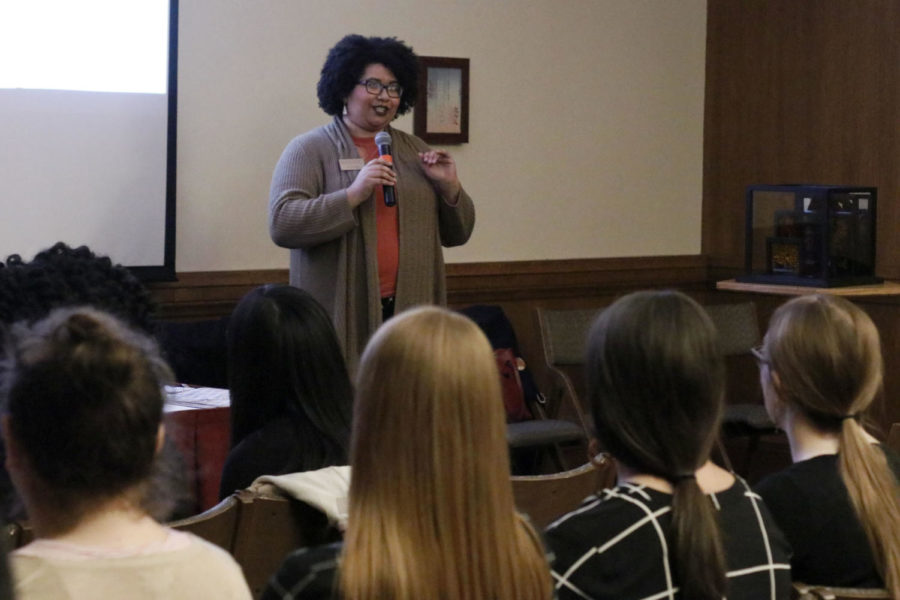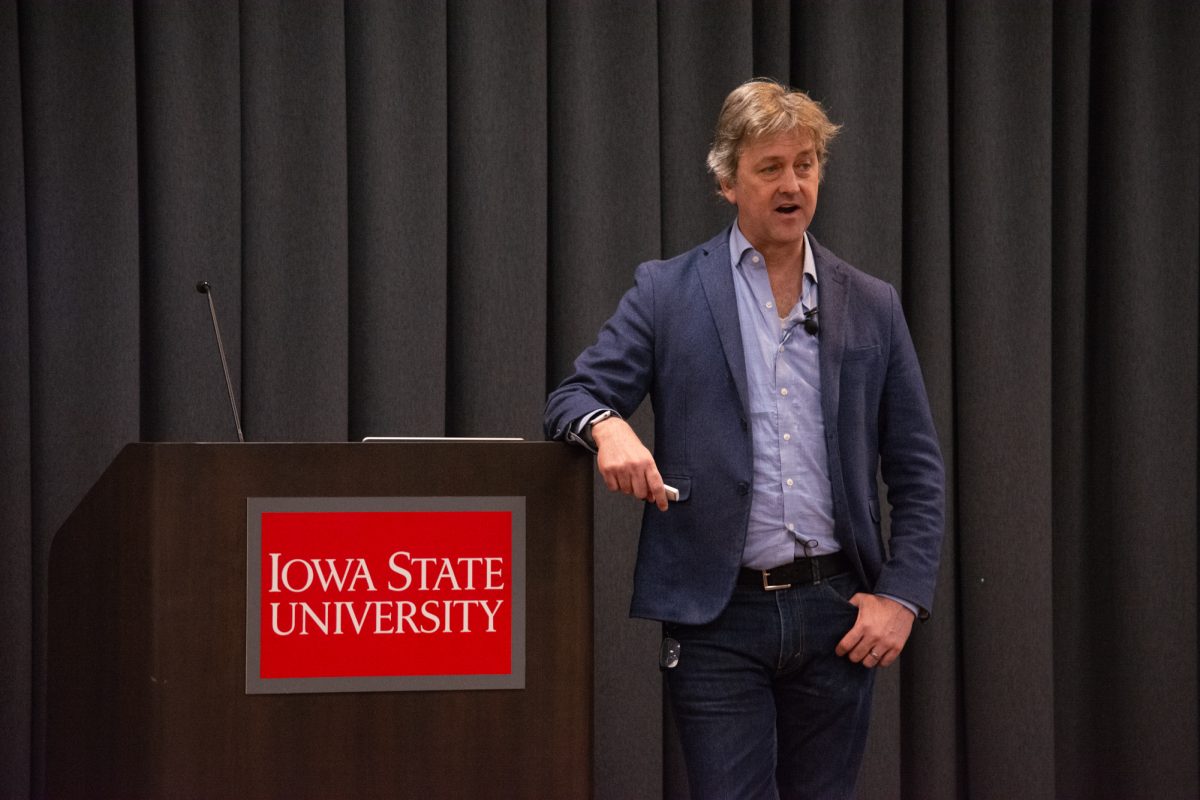3:10 to 4 p.m.: Where do I Belong? Improving Support for Queer and/or Transgender Students of Color (QTSOC) on Campus
Gillian Holte/Iowa State Daily
Janae Due, graduate in the School of Education, presents “The anatomy of a Black woman: The exploration of identity through art, poetry, and pedagogy.” The 19th Thomas L. Hill Iowa State Conference on Race and Ethnicity (ISCORE) was held Friday in the Memorial Union. The event focused on issues of race and ethnicity on a local and national scale.
March 1, 2019
Janae Due, a graduate student in education and Taylor Stoeckler, a graduate student in education discussed the struggles of queer and/or transgender students of color (QTSOC) on college and university campuses.
According to the Consortium of Higher Education LGBT Resource Professionals, QTSOC “refers to individuals who do not identify as white but do identify as queer as it relates to their sexual orientation, gender identity, and/or gender expression.”
Due and Stoeckler explained that higher education is dominated by white, heteronormative and cisnormative values, which creates a lack of resources for QTSOC.
“Don’t make assumptions that because there is a lack of resources that there aren’t people who need them,” Stoeckler said.
Due and Stoeckler talked about how the environment on a college campus greatly affects how QTSOC exist on campus and whether or not they can be holistically themselves.
One topic brought up was affinity spaces, and Due and Stoeckler said that although affinity spaces can be good things and provide safe physical environments, they are often not diverse and can still be unsafe for intersecting marginalized communities such as QTSOC.
Due and Stoeckler said that QTSOC often have to choose between either the multicultural center on their campus or the LGBTQIA+ center on their campus because they rarely fit with both.
Stoeckler went on to talk about identity congruence and how QTSOC must often times remain closeted due to cultural expectations and values. Stoeckler also said that identity favors white culture and disfavors colored cultures.
Due brought up the topic of residence life and how it affects QTSOC. Due said that policies need to adjust to better fit the students it’s serving, such as QTSOC. Due brought up possible housing options that could make QTSOC feel more welcome on college campuses like halls/floors specifically for QTSOC, gender-neutral housing as a whole and private or co-ed bathrooms.
“You may have your own room, but that doesn’t mean the rest of the floor isn’t hostile to you,” Due said when talking about the importance of QTSOC specific housing
Due also suggested race-specific housing for different identities as well as extensive resident assistant training.
Due and Stoeckler gave many examples about how college campuses can better support QTSOC.
These all focused on how to create spaces centered on intersectional identities. Due and Stoeckler said this could be done through collaboration between support offices, educational conversation and policy changes.
Due and Stoeckler said an education around QTSOC can be created through sharing material resources, training for student staff and student organizations and creating professional development opportunities.
One of the policy changes suggested by Due was to adjust how the FAFSA looks at family contribution, because if a QTSOC is estranged from their family they may have to take out substantial amounts of loans.
Overall Due and Stoeckler said that QTSOC are at an intersection of two marginalized communities and college campuses need to adjust otherwise they won’t feel welcome.







